Learn how blockchain truly works, master key definitions, and uncover what makes smart contracts so "smart." Dive into the fundamentals, gain valuable insights, and start your blockchain journey today!
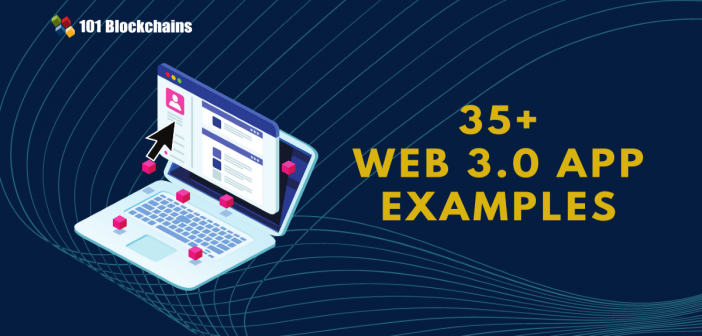
- Web3
101 Blockchains
- on July 29, 2018
35+ Web 3.0 App Examples [Updated]
The article will focus on the evolution of the Web, mainly Web 3.0 examples and architecture, to understand how it can reshape the world as we see it.
The Web has been there for the last two decades. It has been the backbone of all our existence and growth. Right now, millions of users use it on a daily basis, creating value for our economy and growing human society to a new horizon. Right now, we are at a stage where we are moving towards a decentralized web known as Web 3.0.
It might seem like an impossible situation, but in reality, it’s already started to shift toward that. So, let’s get into the nitty-gritty of Web 3.0 and its ecosystem without losing any time.
Web 3.0 Definition: What is Web 3.0?
Web 3.0 is all about a more transparent and fairer network where everyone can participate without fearing a loss of privacy and security. The shift from Web 2.0 to 3.0 is evident with the evolution of technology around us.
Technologies such as artificial intelligence, big data, and others will make it easy to provide a more personalized web experience than ever. Also, web apps will be more intuitive and will make them more accessible for people to use in their daily lives. We now have a lot of Web 3.0 app examples that we will discuss in this article.
Please include attribution to 101blockchains.com with this graphic. <a href='https://101blockchains.com/blockchain-infographics/'> <img src='https://101blockchains.com/wp-content/uploads/2018/07/Web_3_0_Simply_Explaned.jpg' alt='Web 3.0 Simply Explained='0' /> </a>
The introduction of blockchain has also changed how Web 3.0 will work. As we already mentioned, the focus will move to the users rather than the corporation. Web 3.0 blockchain technology stack covers a lot of the elements similar to blockchain stack.
Web 3.0: The Start of a New Era
Now that we have understood what Web 3.0 is let’s get deep into what Web 3.0 has to offer.
Web 3.0 is a completely new era—the era of decentralization where applications that use the decentralized network will reign supreme. Also, no traditional business model will not go affected by this change. You will see new types of blockchain business models to slowly gain popularity. Almost everything can be improved and envisioned with new technologies, especially with blockchain.
Benefits of Web 3.0
We are moving through a revolution that can change our lives completely. Web 1.0 was all about building the basic technologies and the ability to connect through the internet. Web 2.0 took ahead of what Web 2.0 has to offer. However, it was primarily controlled by organizations and corporations for their self-benefit.
Web 3.0 brings the human aspect back by providing privacy and security to the users rather than making corporations more powerful than ever. The vision of Web 3.0 changed in the last 7-8 years. Initially, it was simple, but with the introduction of blockchain and bitcoin, the vision and approach have changed completely. Now, Web 3 focuses more on the decentralized features that the blockchain has to offer.
Please include attribution to 101blockchains.com with this graphic. <a href='https://101blockchains.com/blockchain-infographics/'> <img src='https://101blockchains.com/wp-content/uploads/2018/07/Web_3_0_Benifits.png' alt='Web 3.0 Benefits='0' /> </a>
So, what are the benefits of Web 3.0?
-
Anti-monopoly and Pro-privacy
Web 3.0 will bring a pro-privacy and anti-monopoly structure to the network. It will not incentivize centralized platforms.
In short, we will see a complete turnaround where the central theme will be privacy and decentralization. The middle-man will know no business or need for this kind of platform. This move will be facilitated with the help of blockchains such as Ethereum, Hyperledger, Corda, and others.
The government, on the other hand, will also see decentralization. For the best interest, it is wise for corporations to adapt to new standards of Web 3.0 by providing decentralized services that focus on privacy and security rather than control.
-
Secure Network
Web 3.0 features will be more secure than its predecessors. This is made possible by two factors, including distributed nature and decentralization. Hackers or exploiters will find it difficult to penetrate the network. Also, if they are able to do so, each of their operations can be tracked and retracted within the network.
Without centralization, it will also become hard for hackers to take full control of an organization. However, blockchain platforms do suffer from some form of exploits such as 51% attack, but most of the blockchain apps and platforms can quickly be patched to protect these types of threats.
Build your identity as a certified blockchain expert with 101 Blockchains’ Blockchain Certifications designed to provide enhanced career prospects.
-
Data Ownership
Users will find it easy to trust Web 3.0. Until now, the data generated by the users were stored and used by big corporations. With Web 3.0 features, end-users will have full data ownership. The data that is transferred through the network will be completely encrypted.
Also, users will be able to decide which information they want to share with corporations or 3rd party advertising platforms. However, the current trend is completely different.
With Web 3.0 features, the users can now sell their data to corporations and earn from it.
-
Interoperability
Interoperability is one of the key features of Web 3.0. With a decentralized network, it will become easy for applications to work across different devices and platforms such as T.V.s, smartphones, smart roads, and so on.
Developers will also find it easy to develop Web 3.0 apps.
-
No Interruption in Service
Distributed systems are less prone to service interruption. As there is no central entity for functioning, it becomes hard for a distributed denial of service (DDoS) or other forms of service malfunction attempts to have an impact. This makes Web 3 a great place to share data and critical services without worrying about service interruption.
-
Permissionless Blockchains
The idea behind Web 3.0 is to power blockchains that don’t need a central authority. This means that anyone can join the blockchain and participate by creating an address. Permissionless blockchains open up a new array of possibilities, including access to people who are early discriminated against due to their gender, income, geography, and so on. Although there are permissioned blockchains as well.
So, what exactly it means in layman’s terms? It means that there won’t be any restrictions on Web 3.0.
-
Semantic Web
Web 3.0 will also host the properties of a semantic web. The semantic Web is an improvement over the last set of technologies that are used for Web 2.0. It enables data to be shared across multiple systems, platforms, and community boundaries. It will act as a bridge between different data formats and platforms.
By using the semantic Web, we will be able to connect better, share, and enjoy the internet as never before.
-
Ubiquity
Ubiquity is the result of interoperability. With Web 3.0, we can access data and information across multiple applications without the need for a particular device. This means that you don’t have to worry about getting a particular device to get access to Web 3.0. If a device has basic internet functionality and connectivity, you will be able to access the Web.
All in all, our lives will be completely changed as we will be connected through a better set of technologies such as artificial intelligence, the blockchain, and much more!
Hopefully, by now, you have got an idea of what is Web 3.0 and its benefits.
Learn the fundamentals, challenges and use cases of Web3.0 blockchain from the E-book: AN INTRODUCTION TO WEB 3.0 BLOCKCHAIN
dApps – The Door to the Web 3.0
Now that we have understood what Web 3.0 has to offer, we also need to learn how it will work. Do we get a new browser or a new interface? Well, not really.
We will still be using the same browser and the internet. However, internally, it will change drastically. The new technologies at work will take some time to mature, but once it does, there will be a lot of new things to explore (at least technically). For a normal user, there will be less learning curve.
However, the businesses need to transform their technology stack completely and need to adopt blockchain and related technologies such as artificial intelligence, big data, etc., to be ready for the future.
Here, we will mainly use decentralized applications (dApps).
Each transaction on the internet (Web 3) will be signed and verified before being committed. This will make the internet a secure place. Users will also become safe when it comes to the new Web. We will be using a lot of other apps that will utilize new technologies.
Please include attribution to 101blockchains.com with this graphic. <a href='https://101blockchains.com/blockchain-infographics/'> <img src='https://101blockchains.com/wp-content/uploads/2018/07/The_Web_3_0_Stack.png' alt='Web 3.0 Stack='0' /> </a>
Web 3.0 dApps
The transition has already started with the Web 3.0 dApps. To get a better understanding, we will be divided into different categories and discuss the dApps that will replace traditional services and applications. Using the dApps, one can easily create decentralized organizations‘ business models as well. The transition is inevitable, and it is only time when mass adoption of these apps will take place. To really get a clear picture of what is Web 3.0, you need to deeply understand dApps.
To make it easy for you to follow, we will be listing the different categories. They are as follows.
- Social Networks
- Exchange Services
- Messaging
- Storage
- Insurance and Banking
- Streaming (Video and Music)
- Remote Job
- Browser
-
Social Networks
Social networks play a crucial role in our lives and transform how we communicate, interact and form communities. However, the current generation of social networks is not free from problems. They are limiting, censored, and works towards an internal agenda. Social networks can also be brought by big corporations or government to control the user’s point of view and try to mold them accordingly.
Web 3.0 will completely change how the social network works. With the use of blockchain, it will not be possible for social platforms to be limited in any way. Anyone can join irrespective of their geographical limitations.
Not to mention these social networks have full authority over the data that is shared and stored on the platform. Facebook, for example, recently got stuck in their Cambridge Analytica Scandal. Facebook leaked the data of millions of users, breaking their privacy to a great extent. Google, on the other hand, is also not free from misuses of user data. Overall, if you use any of the current social networks, you are basically trading your data as a fee to use them.
With Web 3.0 social networks, the complete landscape will change—platforms such as Sapien, Steemit, Sola, Indorse, onG.Social, PROPS Project, Yours, etc., looks promising. All of them utilize blockchain and next-generation technologies such as artificial intelligence. Let’s list a few of them below.
Please include attribution to 101blockchains.com with this graphic. <a href='https://101blockchains.com/blockchain-infographics/'> <img src='https://101blockchains.com/wp-content/uploads/2018/07/web_3_0_Decentralizing_Evreyhting.jpg' alt='web 3.0 examples='0' /> </a>
Social Network Web 3.0 Examples
Sapien: Sapien is one of the unique Web 3.0 examples. It is a democratized social news platform that takes advantage of the Ethereum blockchain. Also, it is highly customizable. It is an excellent alternative to Google or Facebook when seen from the social news perspective.
Excited to learn the basic and advanced concepts of ethereum technology? Enroll Now in The Complete Ethereum Technology Course
Steemit: Steemit is another great example of Web 3.0 websites. It runs entirely on the Steem blockchain. Again, iIt is best described as a decentralized reward platform that helps contributors to monetize their content. It is an alternative to Reddit.
Sola: Sola uses blockchain A.I. to create a hybrid of social networks and media. It spreads useful information to the readers according to their preference, all with the help of A.I. algorithms. This way, users get what they want, and that too high-quality content.
These conclude the listing of social networks Web 3.0 websites. All these Web 3.0 app examples fit right into the Web 3.0 definition.
Benefits of decentralized social networks
- No central authority that captures data and uses it.
- Empowers users by rewarding them with some form of asset.
- Improves on the Web 2.0 social networks in almost every way.
- Protects the privacy of the users. Users decide what they want to share and when.
- Big corporations and organizations lose power to influence big corporations.
Decentralized social networks are a great idea and can change how we think, share, and communicate. However, many experts question its real-world implementation and wonder if it will work or not. For now, we can only wait and see what they hold and offer in the near future.
-
Exchange Services
When it comes to the exchange services, centralization is not at all effective. The biggest failure that we can see is when the exchange Mt. Gox got hacked. The hack cost them $460 million worth of bitcoin in 2014. Its value would be at least 1000 times more now.
Decentralized exchanges are slowly growing in popularity as they provide a seamless user trade experience without worrying about any hacks or transparency. This also means that there is no centralized authority and no conflict of interest from the owner’s side. They mainly use many decentralized finance applications to streamline their services. As we already know that the Web 3.0 depends on trust, it is all about decentralized exchange. Let’s list some of the few decentralized exchange services out there.
Decentralized Exchanges Web 3.0 Examples
IDEX: IDEX is a popular decentralized exchange for trading ERC-20 tokens. It provides a good interface for users, and anyone with an Ethereum wallet can start trading on the platform. To make the best use of IDEX or any decentralized Ethereum based exchange, you need to use MetaMask.
EOSFinex: EOSFinex is a decentralized exchange that runs on top of EOS.IO software. It is currently in development by Bitfinex, one of the largest centralized exchanges out there. There are many more dApps in the EOS landscape.
This concludes decentralized cryptocurrency Web 3.0 websites. The examples that we listed fit the Web 3.0 examples.
Benefits of decentralized cryptocurrency exchanges
- Cheaper transactions
- Faster transactions
- Hard to hack due to the decentralized nature
- Works well with hardware wallets
- Users control their own funds
-
Messaging
Messaging has been part of our lives from the day we started using the internet. Well, for most of us, it is either using WhatsApp or Facebook messenger. Other messenger types include Telegram, which is mostly used by startups, businesses, and other forms of professional work.
On the other hand, the government also tends to run its network of intelligence to track down messages, and that is only possible because of centralized solutions.
The solution is Web 3.0 powered apps such as e-Chat, ySign, Obsidian, Riot, and so on. All of these take advantage of blockchain and ensure that the privacy of users is maintained.
Messenger Web 3.0 Examples
e-Chat: e-Chat is a decentralized blockchain-powered Web 3.0 app that offers secure messenger. It is also one of the fastest-growing social networks. By using this messenger, the users get real freedom and can also send cryptocurrency through it. The e-Chat app is already available on App Store and Play Market. It is a great example of Web 3.0 websites.
Obsidian: Obsidian is a promising Web 3.0 project. It is based on STRAT and is powered by their Stratis coin. It is a messenger of the next generation of users. Also, it provides a secure environment where users can communicate or even send funds to each other.
ySign: ySign is yet another communication messenger that is a perfect example of Web 3.0 example. It is set to change the world of messengers with its solution.
This leads us to the end of Messenger Web 3.0 website listing. These examples fit well within the Web 3.0 definition.
Benefits of Decentralized messenger
- Privacy
- Send assets fast and in a secure way.
- Your data cannot be used for advertising
- Fast transactions
Even though there are plenty of advantages to Web 3.0 messengers, it still has drawbacks. For example, criminals can use decentralized platforms to send data and information that cannot be traced by authorities. It can also be used for illegal asset transfers.
-
Storage
There is a lot of innovation that goes into data storage. However, the current state of data storage can be changed with Web 3.0 technologies such as blockchain and big data. As a normal user, we store data on Google Drive and other cloud storage solutions on the internet. It is an entirely different story for the companies as they prefer a more robust and centralized solution to store their valuable data.
The data breach at Linkedin was the worst as it exposed the username and password for 117 million Linkedin users. Uber also meet a similar fate when data of 57 million Uber customers were stolen. The breaches were partly because of the data store they were using.
Current storage systems are also centralized, meaning that the data can be manipulated or used for doing other forms of activities such as selling the data to 3rd parties for advertising purposes.
Decentralized Storage Basics
The basic idea behind decentralized storage is all about sharing files and data through a peer-to-peer connection. The security in decentralized storage is also top-notch as the sender can simply encrypt the files and then send them to the receiver. It can also break the files into pieces and then send them.
Hosting will also be completely possible with a decentralized solution. The hosting will simply keep a shard file that contains the file content in an encrypted format. A hosted file can also be recalled using the private key. Some of these apps use Hyperledger blockchain to facilitate their features.
Build your fluency in Web3 and develop decentralized solutions with the world’s first Web3 Expert Career Path with quality resources tailored by industry experts Now!
Decentralized Storage Web 3.0 Examples
Storj: Storj is one of the leading decentralized storage solutions. It is also one of the oldest. With Storj, anyone can store data. It is also open-source and easy to use. Anyone can get started with it by just 1-Click Start. The payment model is created around users as they can pay as they use. Storj token is used to fuel the Storj platform.
Sia: Sia is also a promising decentralized storage solution and is also held as the biggest competition of Storj. Sia splits the file into thirty segments and then distribute it accordingly. It also encrypts the file while transferring.
Filecoin: The last project that caught my attention is Filecoin. It is a project by Protocol Labs and works in a dual approach and uses two types of network nodes.
This ends the listing of Storage Web 3.0 websites. All the examples fit right in the Website 3.0 definitions.
Benefits of Decentralized Storage Solutions
- It works well across different platforms or even blockchain solution.
- Protects the data being transferred with strong encryption.
- No centralized entity means that anyone cannot use the data.
- It is cheap and works well with next-generation technologies such as IoT.
-
Insurance and Banking
Insurance and Banking is one of the most corrupted sections of our society. For example, is run with a philosophy of making profits. Banking, on the other hand, also is not free from all the shackles of negativity. Overall, we can safely say that the current system is broken and needs to be more transparent and secure for the users to thrive in it.
Both the insurance and banking sector can see a revolution with blockchain technology. There are many use cases of this technology, and the impact can be seen early than thought. The transformation will take place through the use of blockchain features, including transparency, security, retractability. This means that fraud will not be possible in banking or insurance.
Records can now be kept on the blockchain. Also, smart contracts can be used to automate most of the tasks that don’t require any human touch. The implementation of blockchain means that the users will be benefitted the most. Insurance claims will be easy, and the whole process can be carried out with minimal or no paperwork. False claims will also see a deterrence. Digitally savvy users will also find the change useful.
Insurance and Banking Web 3.0 Examples
AiGang: Aigang is a DAO insurance protocol that offers crowd-sources insurance pools discovery. It can be used by users who can win rewards by prediction powered by DAO smart contracts.
Everledger: It is a distributed digital global registry that aims to provide unique records to each user. The users can digitally store data and have access to them anytime they want. It protects the users and banks, open marketplace, and insurers from frauds.
Cashaa: Cashaa is the next generation banking platform that provides regulation, compliance, and security. It provides instant crypto banking loans and also offer cryptocurrency trading.
Safe Share: The company is currently developing insurance products that take advantage of the shared network, such as blockchain. It brings confidence in business and helps it grow to new heights.
This concludes the listing of insurance and banking Web 3.0 websites. All these examples fit right into the Web 3.0 definitions.
Benefits of blockchain for Insurance and Banking
- No or fewer frauds.
- False claims can be blocked and removed
- Improved customer experience.
- Empowering digital savvy
- Internal audits for banks can be done easily.
- International and cross-payment is now a possibility with blockchain.
-
Streaming (Video and Music)
Streaming is a big industry. Also, it is stated to grow more readily in the upcoming period. As a user, you already know the big players that surround us.
Even though they provide a great user experience, the whole concept of monopoly is not good for the industry in the long run. Many issues, including unclear policies, also plague the current streaming platforms. They also utilize the user data for advertising purposes, which breaks the privacy users want when they are online. All the streaming platforms are almost free regarding cost. In that case, you become the product for them.
Also, when it comes to content creators, Twitch and YouTube fail to justify low payments. New streamers find it hard to get started on any of the platforms, and neither of the platforms has a solution to this problem. In short, the centralized control over the streaming platform doesn’t provide equal opportunity to everyone around us.
Meet Web 3.0 applications and their functions for video and music. In Web 3.0 video examples, we have the likes of Livepeer, Viuly, Flixxo, Videocoin, LBRY, and so on.
All the above platforms are promising and solve the problem of video and music streaming in their own way.
Web 3.0 Video and Music Websites Examples
To get a better grasp, let’s list video and music Web 3.0 websites.
LivePeer: Livepeer is a decentralized platform that runs on the blockchain. It provides an open-source streaming service that aims to build a streaming stack for Web 3.0.
LBRY: LBRY is a decentralized digital library that houses a different form of content. As a user, you can read, watch and play on the platform. This means it supports books, music, and videos, and it seems to be one of the oldest Web 3.0 projects.
UjoMusic: UjoMusic is a music platform where music creators can upload their music and distribute it without copyright and royalty issues. Cryptocurrency and smart contracts power it.
Maestro: Maestro is a music streaming platform for listeners and artists that utilize blockchain.
Benefits of blockchain in streaming
- Content creators can work in a transparent environment
- Everyone gets an equal chance to promote their work.
- Copyright issues will be negligible thanks to smart contracts
- No central authority means that will be no absurd policy for streamers and content creators.
-
Remote Job
The world is moving towards remote jobs. In the U.S. alone, freelancing and remote jobs make a lot of the U.S. workforce. It is quite fascinating to see where we are headed as we prefer working from home than in the office. Whatever may be the reasons, the centralized remote job platforms are not up to the mark.
Decentralized remote job/freelance platforms can readily solve these problems. Some of the examples include EthLance, Atlas.Work, CryptoTask, Blocklancer, and so on.
Remote Jobs Web 3.0 Examples
To get a better grasp, let’s list Jobs Web 3.0 websites.
Ethlance: Ethlance is a decentralized, remote job platform that works on top of the Ethereum blockchain. Anyone can hire and work in exchange for Ether cryptocurrency. The most significant advantage of using this platform is 0% service fees, no restrictions on membership, and so on.
Atlas.Work: Atlast.Work is a blockchain-powered freelancing platform that is scalable and uses smart contracts and machine learning to empower a freelancing ecosystem where both freelancers and employers can enjoy maximum benefit. It has a flat charge rate of 2$ per task.
CryptoTask: CryptoTask is yet another Web 3.0 powered project that has no fees and censorship for users. It also uses an advanced algorithm for matching freelancers with gigs.
Benefits of decentralized, remote jobs platform
- No-or-minimal fees.
- No-centralized authority means anyone can join.
- No-restriction for joining the platform.
- Get paid in cryptocurrency
-
Browser
Browsers are the doorway to the internet. The two major browsers out there are Google Chrome and Firefox. They capture most of the market. Google’s dominance is in no way ignored.
We explore the Web through the web browser. For browsing the web 3.0, we need a browser that fits the decentralized Web’s philosophical aspect. Also, the current-gen browsers are not completely secure when it comes to protecting users.
When users go into infected websites, their computers can get infected. Browsers also leak information if they are not well developed according to current security standards. For example, your browser stores your location, hardware and software information, connection information, social media information, and so on.
The users are also vulnerable through the add-ons that these modern browsers have to offer. The solution is to use a decentralized browser that provides a better ecosystem using blockchain technology.
A few of the Web 3.0 browser examples include Brave and Breaker browsers. All these examples fit right into the Web 3.0 definitions.
Web 3.0 Browser Examples
Brave: Brave is all about privacy where users are not the product. The browser comes pre-installed with Ad-blocker. It will also allow users to sell their data in exchange for cryptocurrency.
Breaker Browser: It is a next-generation web browser that is peer-to-peer based. It is a place where anyone can join, share and supercharge their apps. Also, it is a creative tool that can be explored by anyone. It is a Web 3.0 browser.
Benefits of Decentralized Browser
- Users can privately browse the internet.
- No or fewer security loopholes.
- The users can sell their data to an organization and get paid.
- Fast and secure.
Conclusion
Web 3.0 is here to stay. We are at the initial stages where the Web 3.0 applications and their functions are still in development. Also, there need to a need for mass adoption for Web 3.0. It may take ten years to change the web landscape completely. Even so, it’s well worth the wait and necessary for now.


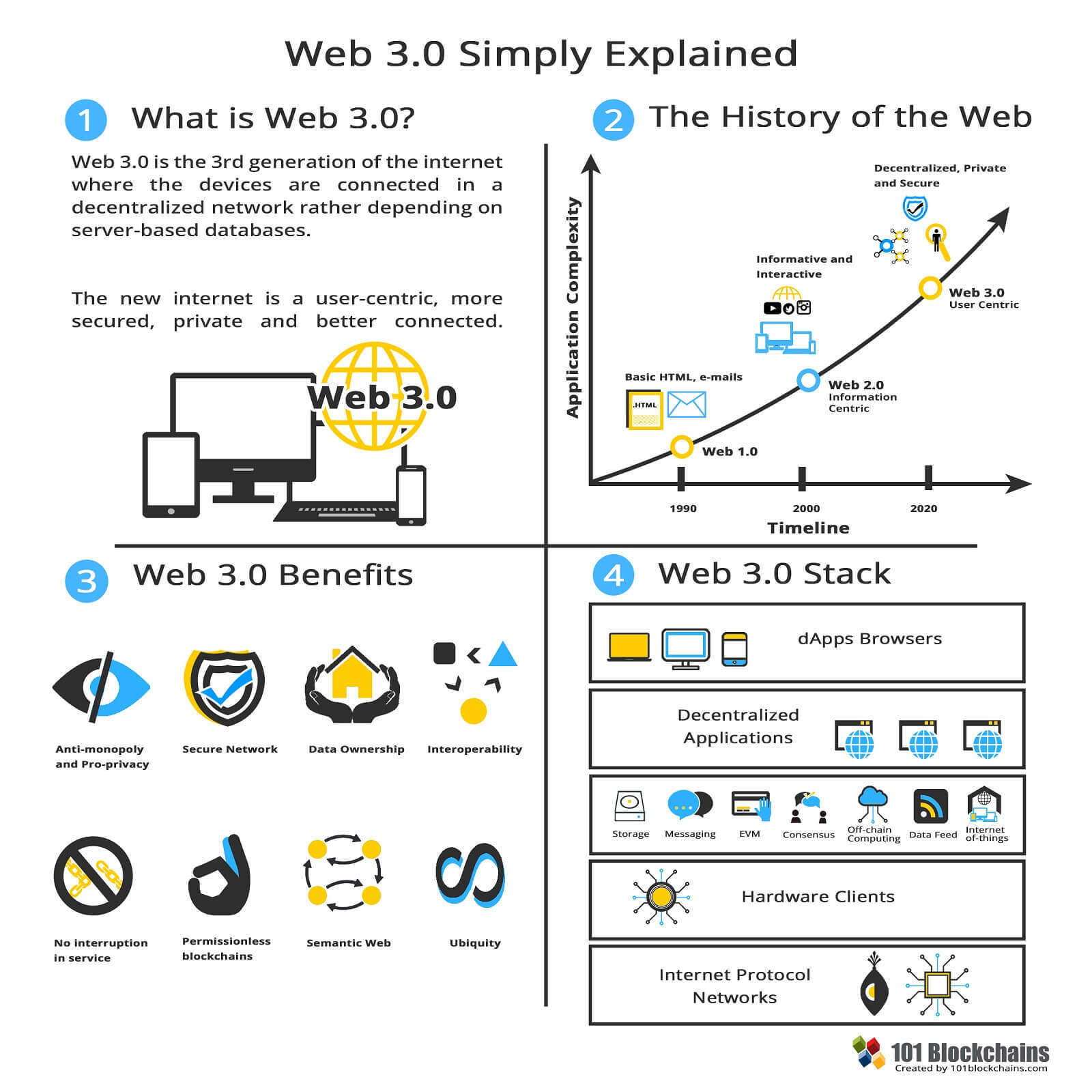
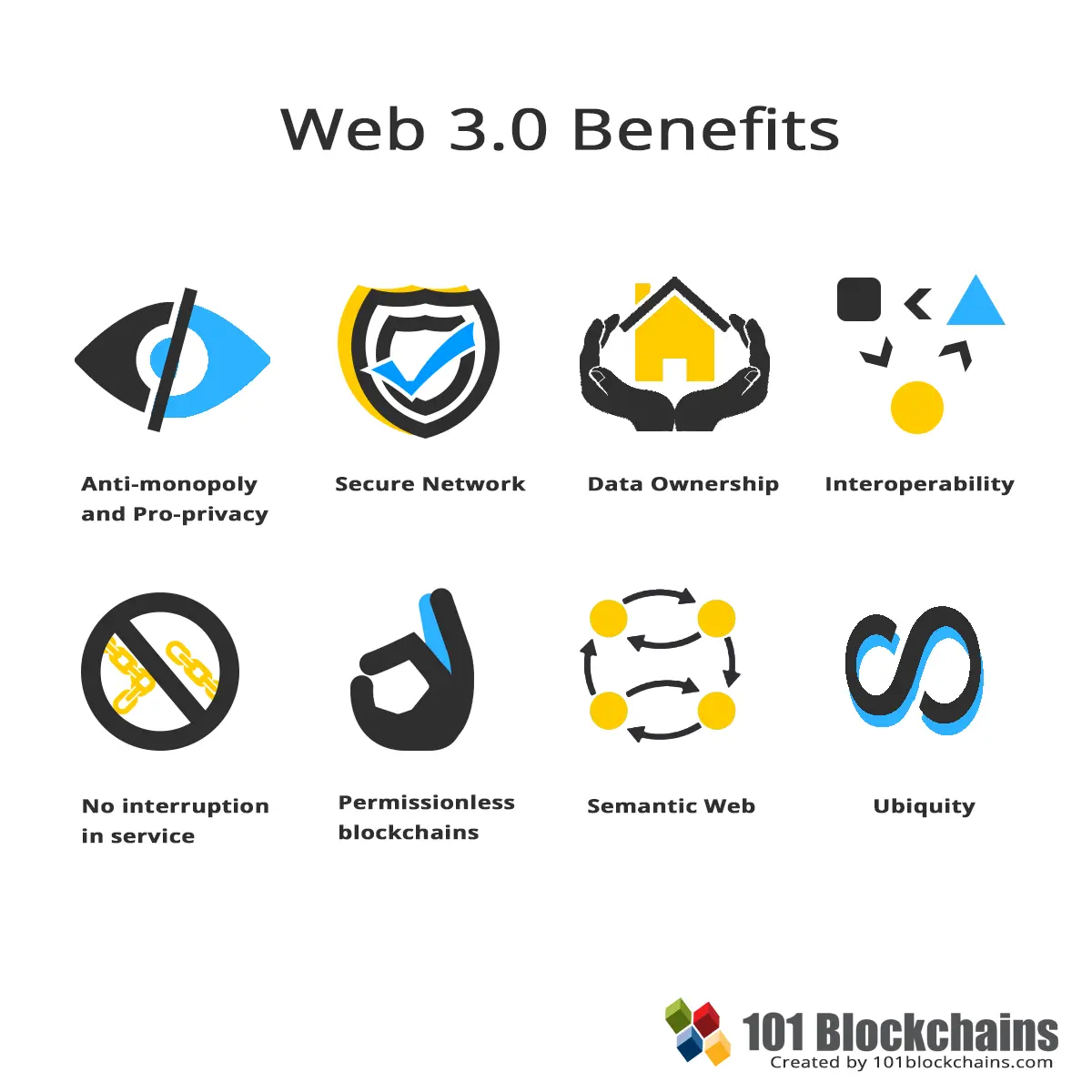
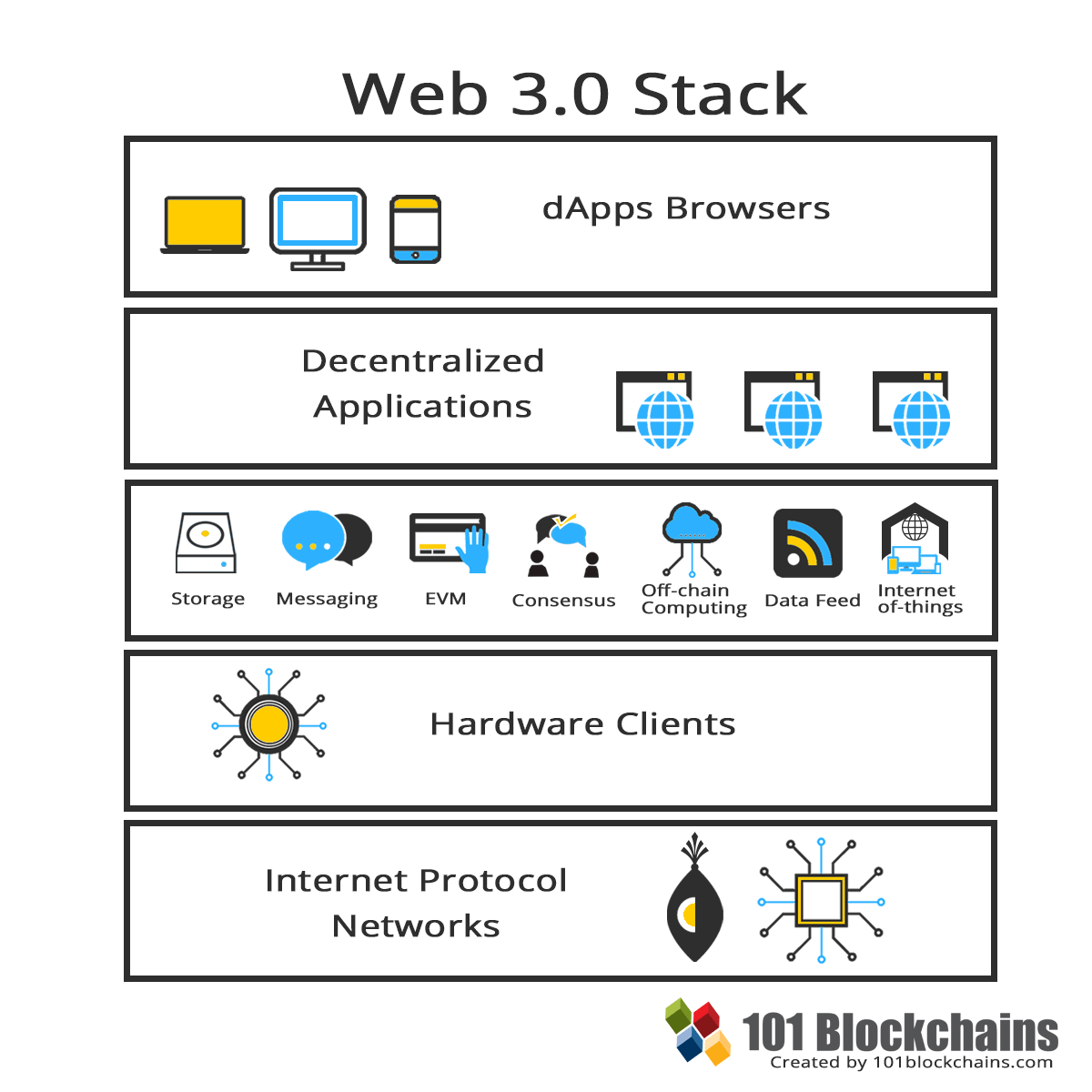
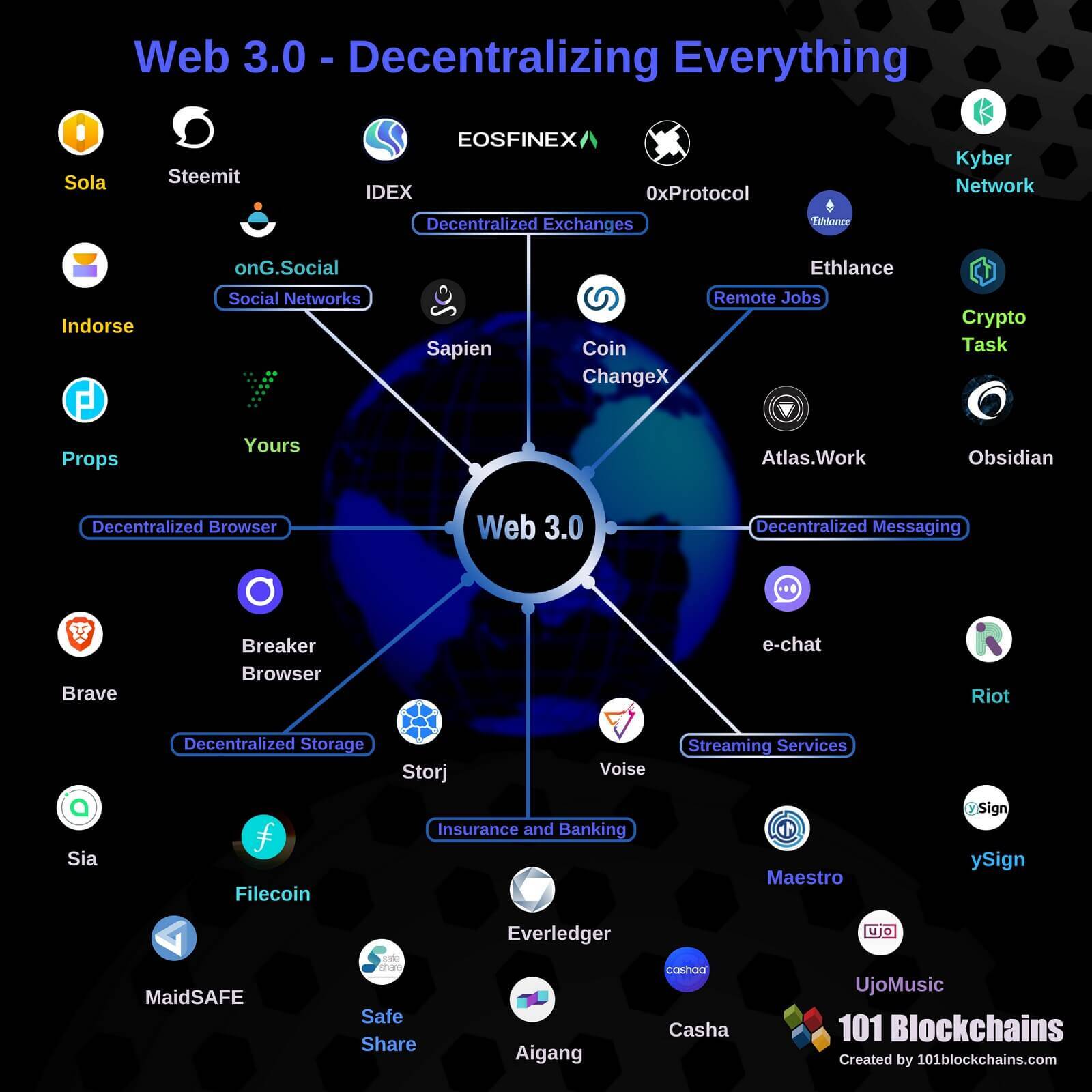


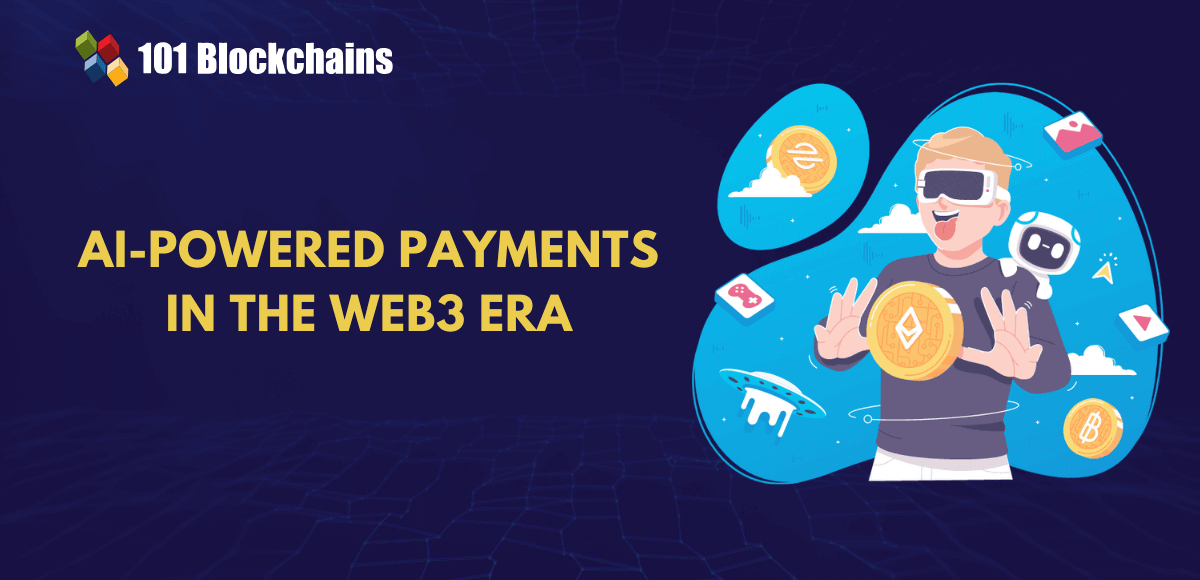

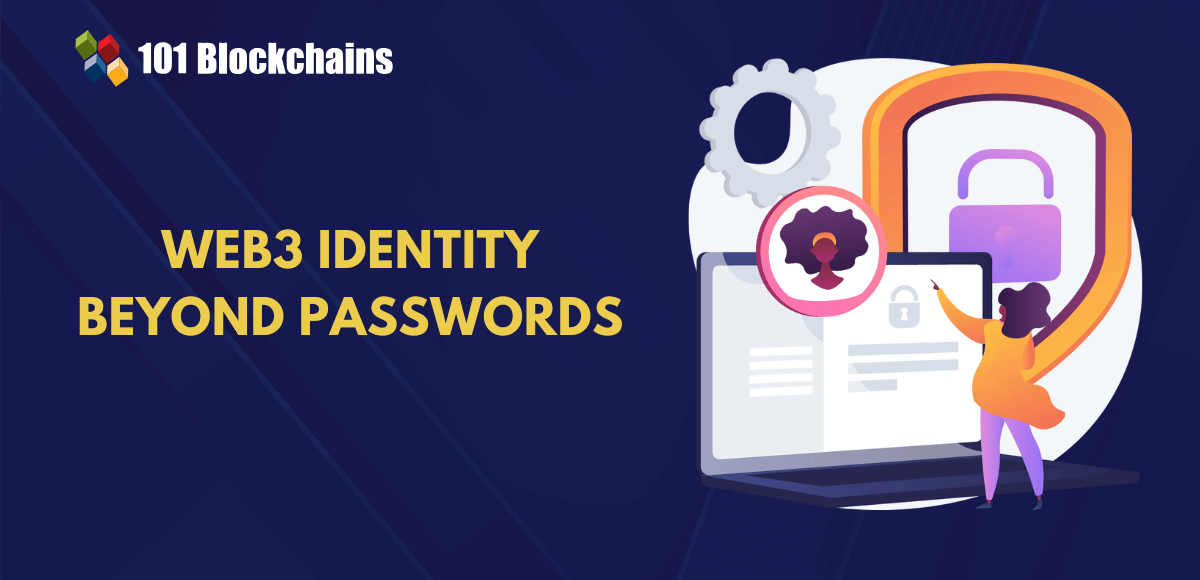
6 Comments
Thanks for the great article. Regarding to Social Networks, or even more so decentralized content publishing platforms, I would recommend checking Primas (https://primas.io/). They are doing great work on fighting plagiarism, fake news and censorship by utilizing the blockchain tehnology.
Hi Joonas
Thanks for this feedback!
Really loved this well written easy to understand article about web 3.0
Thanks so much for the article. I am using it for my studies. I will quote the author and this site in my assignment. I hope you don’t mind. This is one of the best articles I’ve ever read, made me understand the web so easily. Thanks again.
I am using this article for study purpose. Will quote the author and site in my paper. Thank you for this excellent write up.